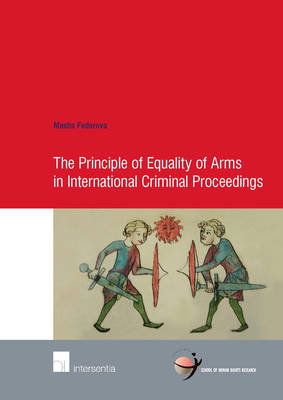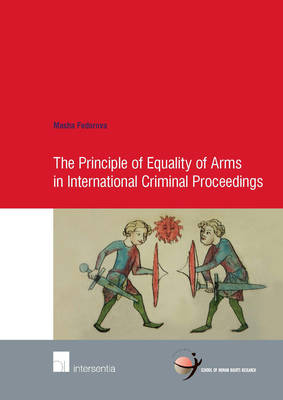
- Afhalen na 1 uur in een winkel met voorraad
- Gratis thuislevering in België vanaf € 30
- Ruim aanbod met 7 miljoen producten
- Afhalen na 1 uur in een winkel met voorraad
- Gratis thuislevering in België vanaf € 30
- Ruim aanbod met 7 miljoen producten
The Principle of Equality of Arms in International Criminal Proceedings
Masha Fedorova
€ 124,45
+ 248 punten
Omschrijving
This book studies the interpretation and application of the principle of equality of arms in proceedings before several international criminal courts. The coming of age of these institutions merits an evaluation of the application of one of the fundamental principles underlying a criminal procedure. The practice of these courts presents some substantial challenges to achieving a meaningful equality of arms in the context in which these courts operate.
Before studying the law and jurisprudence of the International Criminal Tribunals for the former Yugoslavia and Rwanda, the Special Court for Sierra Leone, the International Criminal Court, and the Extraordinary Chambers in the Courts of Cambodia, the historical roots and the meaning of the principle of equality of arms are examined from two perspectives: the human rights perspective and the criminal process perspective.
Subsequently, four themes that are central to understanding the principle of equality of arms in the international criminal context are discussed. First, the focus is on the investigation stage of the criminal process and the ability of the parties to prepare for trial. Next, the study takes a closer look at the system of disclosure of materials that were collected during investigations. Third, attention is paid to the issue of the perceived inequality in resources and facilities between the parties and the institutionally unequal positioning of the defence. Last, issues concerning the presentation of the case at the trial stage, such as the time and the number of witnesses the parties are allowed to present and the issues relating to the examination of witnesses and the admissibility of evidence, are examined. The book concludes with general observations on the scope and proper understanding of the principle of fairness, the right to a fair trial and the principle of equality of arms.
Before studying the law and jurisprudence of the International Criminal Tribunals for the former Yugoslavia and Rwanda, the Special Court for Sierra Leone, the International Criminal Court, and the Extraordinary Chambers in the Courts of Cambodia, the historical roots and the meaning of the principle of equality of arms are examined from two perspectives: the human rights perspective and the criminal process perspective.
Subsequently, four themes that are central to understanding the principle of equality of arms in the international criminal context are discussed. First, the focus is on the investigation stage of the criminal process and the ability of the parties to prepare for trial. Next, the study takes a closer look at the system of disclosure of materials that were collected during investigations. Third, attention is paid to the issue of the perceived inequality in resources and facilities between the parties and the institutionally unequal positioning of the defence. Last, issues concerning the presentation of the case at the trial stage, such as the time and the number of witnesses the parties are allowed to present and the issues relating to the examination of witnesses and the admissibility of evidence, are examined. The book concludes with general observations on the scope and proper understanding of the principle of fairness, the right to a fair trial and the principle of equality of arms.
Specificaties
Betrokkenen
- Auteur(s):
- Uitgeverij:
Inhoud
- Aantal bladzijden:
- 529
- Taal:
- Engels
- Reeks:
Eigenschappen
- Productcode (EAN):
- 9781780681115
- Verschijningsdatum:
- 8/09/2012
- Uitvoering:
- Paperback
- Afmetingen:
- 171 mm x 238 mm
- Gewicht:
- 942 g

Alleen bij Standaard Boekhandel
+ 248 punten op je klantenkaart van Standaard Boekhandel
Beoordelingen
We publiceren alleen reviews die voldoen aan de voorwaarden voor reviews. Bekijk onze voorwaarden voor reviews.










